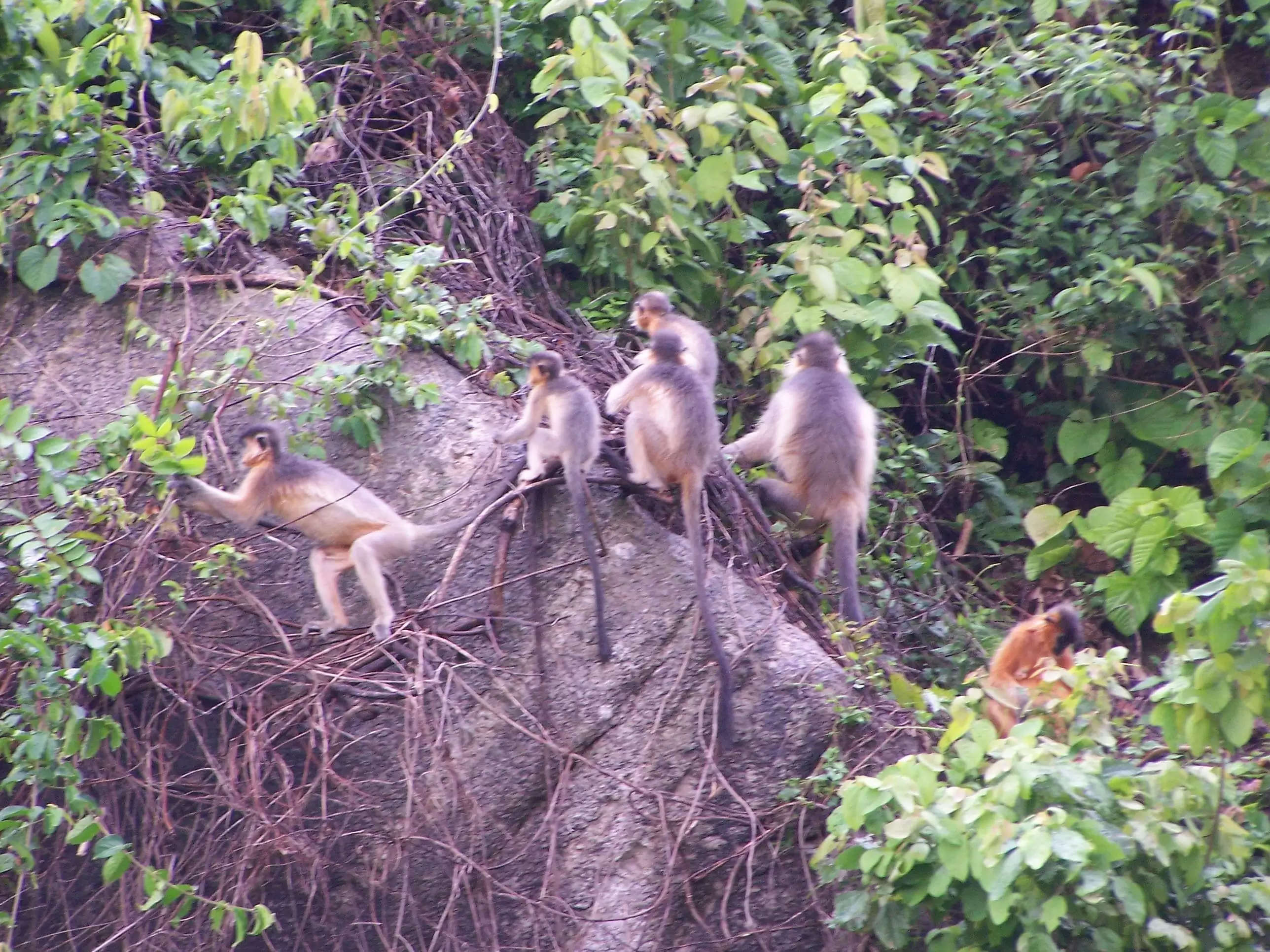Sri Surya Pahar archaeological site in Assam is turning into a conservationists dream for the capped langur

(by Biplab Dey)
Sri Surya Pahar, about 18 kms from the town of Dudhnoi under Goalpara, is a popular spot. However, many may not know that the place is turning into a conservationist’s dream for the capped langur, an endangered species of monkeys that have been living here since decades.
The International Union for Conservation of Nature (IUCN) lists the capped langur as threatened because of the loss of habitat, though it is still found in countries such as Bangladesh, Bhutan, Myanmar and India. The capped langur has 4 subspecies, three of which fall under the vulnerable category under IUCN. The particular sub-species found in Sri Suyra Pahar however falls under the endangered category.
Sri Surya Pahar is sacred for being the place of confluence of three religions, Hinduism, Jainism and Buddhism, temples of which dot the area. The area is also historically important and a site that has been explored by the Archeological Survey of India (ASI), which has a museum that displays various historical artifacts that were discovered in the place.
The particular species found in Sri Surya Pahar had earlier been researched on by an Assistant professor of Zoology from Goalpara College, Dr Dhiraj Kumar Borah, while he was still working on his doctoral studies. He had then identified 32 capped langurs during his year-extensive study on the mammals.
“The capped langur is threatened due to a loss of habitat, and the diminishing numbers have been worrisome. Earlier I did my research for about a year on these mammals to look into their food, reproduction habits and anthropogenic pressures to understand the langurs,” said Dr Borah.
Worrying about the situation faced by the mammals, he wanted to check once again on how they were faring in the current situation they faced. A loss in numbers would be a body blow to the efforts of conservation that he had set out to achieve and the efforts of many that cared for the capped langurs.
“I did my research in the year 2008-09. These animals are extremely shy and hard to spot. They however use 40-50% of their time in foraging for food which comprises leaves, twigs, fruits among others,” added Dr Borah.
The lecturer felt he needed to check on the status of the langurs to determine whether the area they were occupying was helping the numbers grow.
“I was really fearful and expected that the numbers would diminish because of various anthropogenic threats. However, I was pleasantly surprised to see the number of langurs has gone beyond 50 with at least 4-5 families being identified by local temple authorities. While this may not be a vast increase, it is at least a big positive and shows the langurs are adapting well,” added Dr Borah.
The lecturer credited the efforts of the Temple Committee, which has been going the extra mile to ensure the area remains protected and so are the animals within.
“The rhesus macaque is very common in Sri Surya Pahar, but the capped langur is hardly seen. The temple authorities have, through the years, identified the numbers through sheer hard work. Further, they have also promised to ensure that they do everything possible to ensure the animals have the best chance at survival,” added Dr Borah.
He hoped that more such areas are identified in the coming days to ensure that such nature’s treasures are not lost to pressures of modern life.
(Edited by Christopher Gatphoh)

















